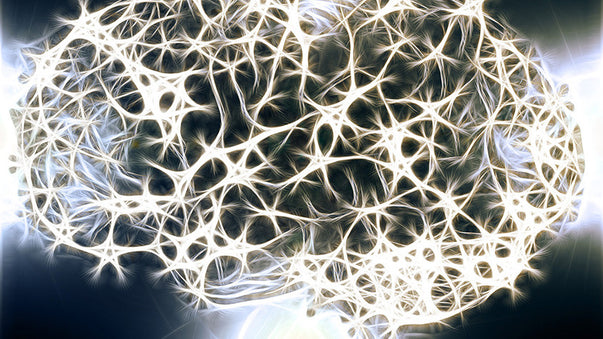Medical Tourism for Genetic Life Extension

Welcome to this new issue of Pulse, your weekly newsletter focused on human enhancement today and tomorrow, brought to you by Thrivous!
Among recent news of supercomputers and electric fields enrolled in the war on cancer, electronic chips that learn by emulating the neural circuitry of humans, and paralyzed patients moving their legs again thanks to electric spinal cord stimulations, the genetic life extension therapy news from Bioviva, outlined below, seems especially interesting.
Someday, operational genetic treatments like those pioneered by Bioviva could effectively lengthen our telomeres and thus our lifespan. But Bioviva CEO Liz Parrish had to travel to a place with less strict medical regulations to be administered treatment.
Given the current impressive progress of biotech and genetic engineering, not only in the pharmaceutical industry research lab but also in biohacking garages, it seems likely that one day we’ll be able to take action to live longer, but only at a certain personal risk and outside the regulatory framework of our country. “Medical tourism” for advanced, experimental genetic therapies could become a boom industry, which could raise some ethical concerns.
On the other hand, it seems reasonable that people should be able to choose what to do with their own body and at their own risk. Including, for example, implanting 3D printed replacement organs or injecting medical nanorobots as discussed at CeBIT 2017.
Supercomputers model cancer-causing protein interactions at cell membranes. Scientists at Case Western Reserve University have found, with supercomputer simulations, that fats and electrical charges in the membrane of a cell regulate the shape and orientation of cancer-causing protein K-Ras, and either allow the protein to penetrate the cell or, conversely, render the protein inactive. The research, published in Structure, shows that the orientation of the K-Ras protein at the membrane determines its action, and a particular type of membrane lipid, PIP2, turns the protein to an orientation that allows it to become active and promote cancer. This could open the way to new cancer therapies based on agents that limit concentrations of PIP2 in cell membranes.
“Sci-Fi” electric therapy for brain cancer patients. Pharmaceutical company Novocure, specialized in a proprietary cancer therapy that uses electric fields to disrupt solid tumor cancer cell division, has announced the final results of a clinical trial in which Optune, the company’s wearable electric field delivery system, was added to standard chemotherapy for the treatment of newly diagnosed glioblastoma, a form of brain cancer. According to the study’s results, adding Optune increased two-year survival rate from 30 percent to 43 percent, and more than doubled five-year survival rate from 5 percent to 13 percent. Associated Press describes the therapy as “sci-fi” but notes that it would cost patients $700 a day, which some insurances wouldn’t cover. Novocure stated they would cover the costs.
Advances toward “memristor” chips that learn. This isn’t directly related to biological health, but could one day influence human enhancement technologies. CNRS researchers in France have created an artificial synapse capable of learning autonomously. The open access study, published in Nature Communications, includes a physical model that explains the learning capacity of the “memristor” chip with variable electric properties. This understanding of the process will make it possible to create more complex systems, such as a series of artificial neurons interconnected by these memristors. Short-term applications to computer vision are foreseen, but learning artificial neurons could one day be used in next-generation brain implants.
Electrical spinal cord stimulation helps paralyzed patient to use his legs. Using electrical stimulation on the spinal cord and intense physical therapy, Mayo Clinic researchers helped a paralyzed patient to move and start using his legs for the first time in three years. In an open access study published in Mayo Clinic Proceedings, the scientists note that a combination of this technology and rehabilitation may help patients with spinal cord injuries.
Encouraging results of anti-aging genetic treatment, which had to be administered outside the US. In a video interview, Liz Parrish, CEO of Bioviva, a company focused on anti-aging genetic therapy, reports recent developments in her own anti-aging genetic treatment, designed by Bioviva. Parrish received a myostatin inhibitor, which is expected to prevent age-associated muscle loss; and a telomerase gene therapy, which is expected to lengthen telomeres, segments of DNA at the ends of chromosomes whose shortening is associated with aging and degenerative disease. Bioviva reports encouraging results of the treatment. Due to regulatory obstacles, the treatment had to be administered outside of the US, which seems to indicate the possibility - both intriguing and worrying - that “medical tourism” for radical genetic therapies could ramp up.
3D bioprinting and medical nanobots discussed at consumer electronics fair CeBit. Experts gathered at CeBIT, the leading European technology fair held annually in Germany, are persuaded that bio-printing is coming of age: in just a few years, 3D printers are going to be turning out human organs for transplants. Speaking at CeBIT, futurologist Ray Kurzweil went even further and predicted that, in the 2030s, nanorobots in our blood stream will augment our immune system keeping us healthy, providing virtual and augmented reality from within the nervous system, and connect us to the Internet.
More Articles
Don't miss a beat! In our Pulse Newsletter, Thrivous curates the most important news on health science and human enhancement, so you can stay informed without wasting time on hype and trivia. It's part of the free Thrivous newsletter. Subscribe now to receive email about human enhancement, nootropics, and geroprotectors, as well as company news and deals.
Read more articles at Thrivous, the human enhancement company. You can browse recent articles in Thrivous Views. See other Pulse Newsletter articles. Or check out an article below.
-
Healthy and Active Aging is in the Mind
Welcome to this new issue of Pulse, your weekly newsletter focused on human enhancement today and tomorrow, brought to you ...
-
Neural Lace and Programmable Cells
Welcome to this new issue of Pulse, your weekly newsletter focused on human enhancement today and tomorrow, brought to you ...


